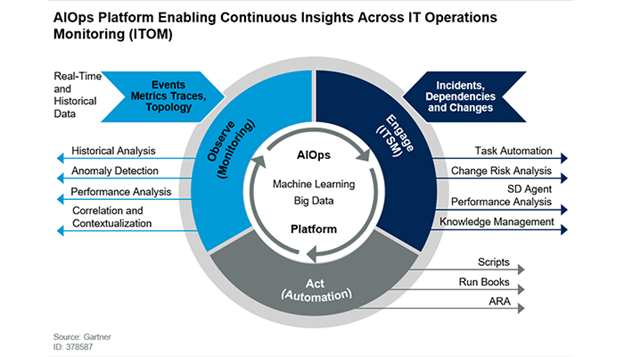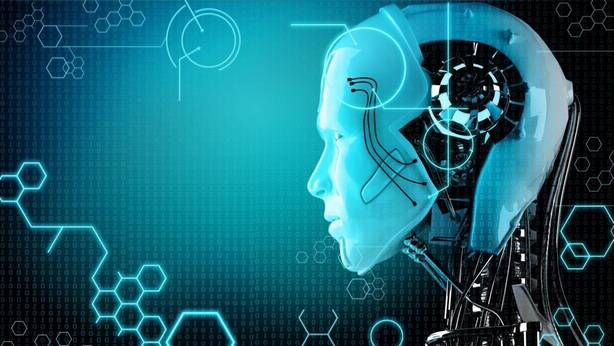
I am going to tell you the Difference between AIOps and Artificial intelligence (AI) on the basis of their Definition and how they work and what are the components of them. So let’s start.
What is AIOps?
AIOps stands for artificial intelligence for operations team promises to improve the events correlation, speed root cause analysis, and drive automation.
In other words, the ability to drive the automated process by using automation, whether the process is around incident management, remediation.
Let’s take an example- If you are getting so much alerts noise at the time of monitoring you could either ignore them or put lots of effort to solve that, but the AIOps is driven to drive the resolution to that issue with the help of automation, that means not much effort, work done in less time or say in a smarter way.
AIOps is all about delivering a better customer experience, that’s why much more customers are adopting AI machine learning. With AIOps you can predict and fix most common IT problems before they impact customer experience and free up the IT teams to innovate.
AIOps leverages big data and collects data from different platforms like ops tools and devices to automatically spot and react to the issue in real-time.
The goal is to increase the speed of delivery of the services to improve the efficiency of IT services and in other words to provide a superior user experience.
It’s clear that AIOps break down the siloed operations and enable the generation of insights that can be communicated to stakeholders and it can help in driving automation and collaboration.
Need of AIOps
AIOPs offer clarity to performance data and dependencies throughout all environments, examine the data to take out the important events which are associated with outages or slow down, and automatically alert members to problems, the root causes, and recommended solutions.
Components of AIOps
1) Extensive and diverse IT Data
2) Aggregated big data platform
3) Machine learning
4) Observe
5) Engage
6) ACT
7) Automation
AIOPs bridges three different IT disciplines –
1) Service management
2) Performace management
3) Automation
What is artificial intelligence (AI)?
AI refers to the automation of tasks by feeding data or by taking the help of machine learning to learn new things by getting data from the internet, locally saved data, or from the instruction that has been installed to work like as instructed.
Machine learning is a kind of brain to AI that helps it to think or decide like a human brain but not completely because humans are creative. We can do anything by using our brains that can’t do machines.
AI had been thought of in 1955 and introduced in 1956 in a seminar by John McCarthy, that’s why we call him the father of AI as well.
It is said AI is our future but it’s not true AI is present as well as future.
Some examples that we are using currently are Alexa, Siri on iPhone, Google Assistant, Tesla car, Cortana on windows. All these are some examples of present AI that we are using and Google maps are also one of them and many more.
Artificial Intelligence (AI) in the field of computer science.
Stages of AI
- General AI
- Narrow AI
- Artificial super intelligence
General AI means lots of works and activities can be done. Humans can dance, eat and do many more activities, in the same way, AI can also do multiple tasks. But unfortunately, we don’t have that much evolved AI right now. We can make it do any particular task that we want to make it done. In other words, we have only narrow AI’s right now.
Narrow AI means it is focused on any particular task that is assigned to it such as an application is designed to take a photo but a human can do anything with that photo. So this is the difference between AI and humans. (General and narrow AI).
Artificial super-intelligence means the machine which will surpass humans in thinking, behaving, etc, and can do much more which we can’t imagine. But we don’t have such kind of super-intelligence right now but. It is like hypothetical robots that have been shown in movies.
Advantages and Disadvantages of AI
Advantages
- Workloads can be decreased.
- Time can be saved.
- Errors can be reduced
- Automation
- To remember things easily
- We can use robots instead of humans as cops
- Designing and construction without hard work
- Can work without breaks
- Collection of data and many more.
- Solve problems and perform complicated tasks
Disadvantages
- Humans will become lazy.
- If somehow anyone can succeed in manipulating the AI then it can be dangerous to human’s kinds.
- Machines can keep an eye on us all the time by using cameras and many more, which means no privacy.
- It can give unemployment to people
- High cost of maintenance
- Can’t sense like humans
- Lack of creativity
Types of AI
- Reactive machine AI
- Limited memory AI
- Theory of mind AI
- Self-aware AI
Training Place
I would like to tell you about one of the best places to get trained and certification in DevOps, DevSecOps, SRE, AIOps, MLOps, GitOps, AI, and Machine learning courses is DevOpsSchool. This Platform offers the best trainers who have good experience in DevOps and also they provide a friendly eco-environment where you can learn comfortably and free to ask anything regarding your course and they are always ready to help you out whenever you need, that’s why they provide pdf’s, video, etc. to help you.
They also provide real-time projects to increase your knowledge and to make you tackle the real face of the working environment. It will increase the value of yours as well as your resume. So do check this platform if you guys are looking for any kind of training in any particular course and tools.
